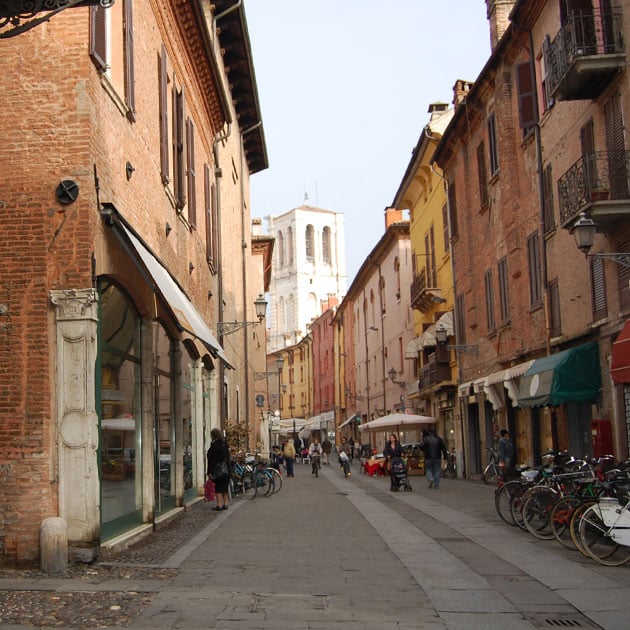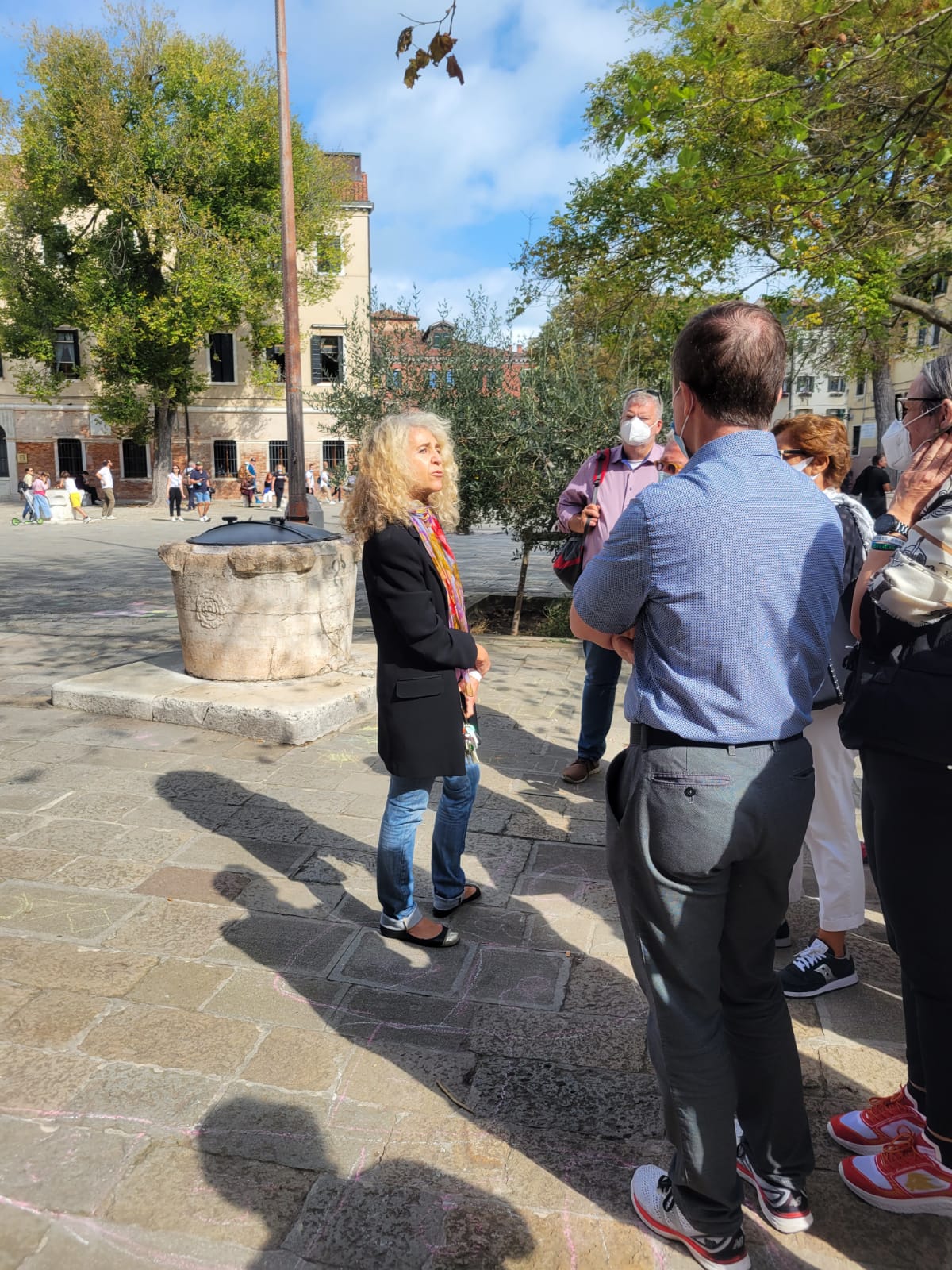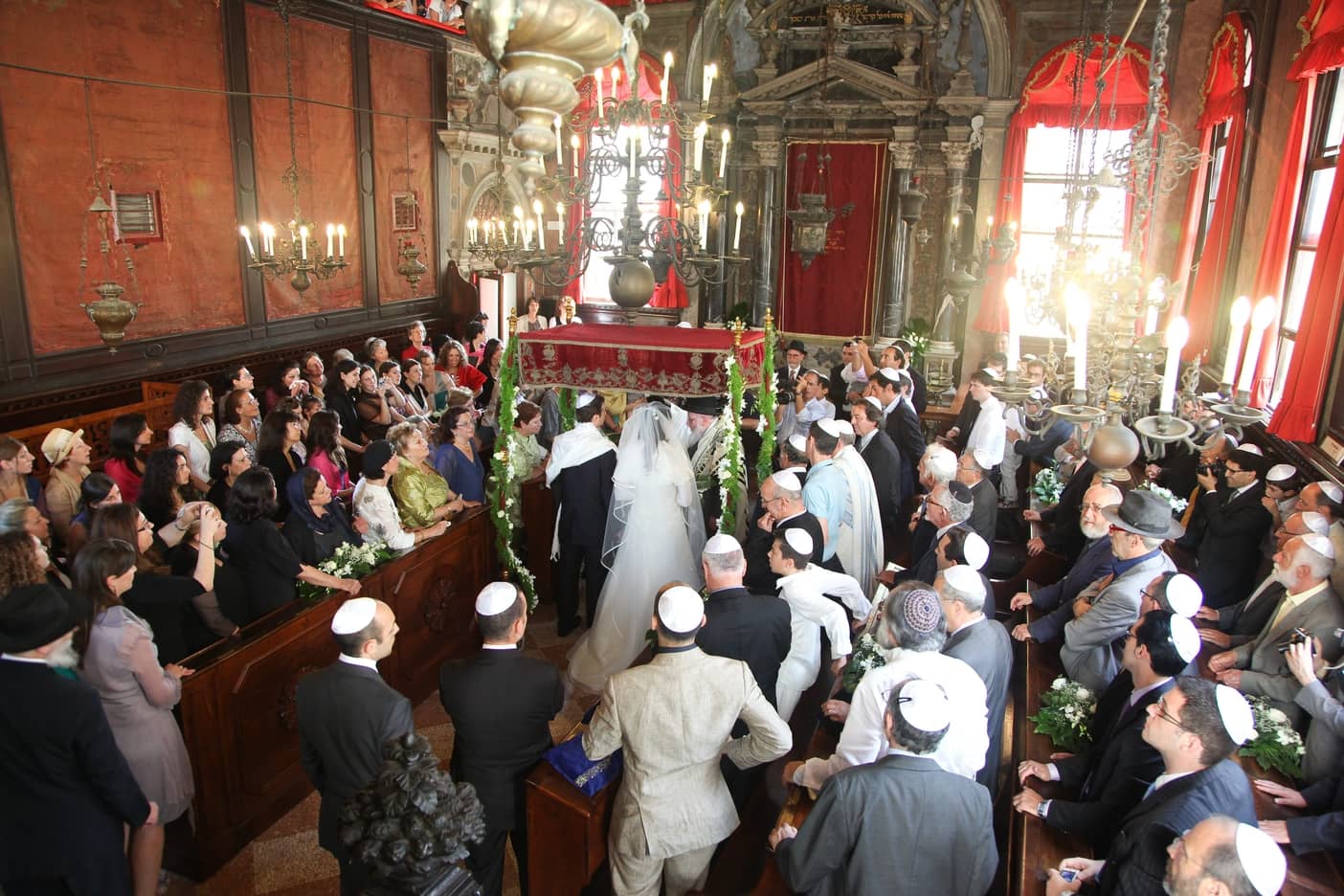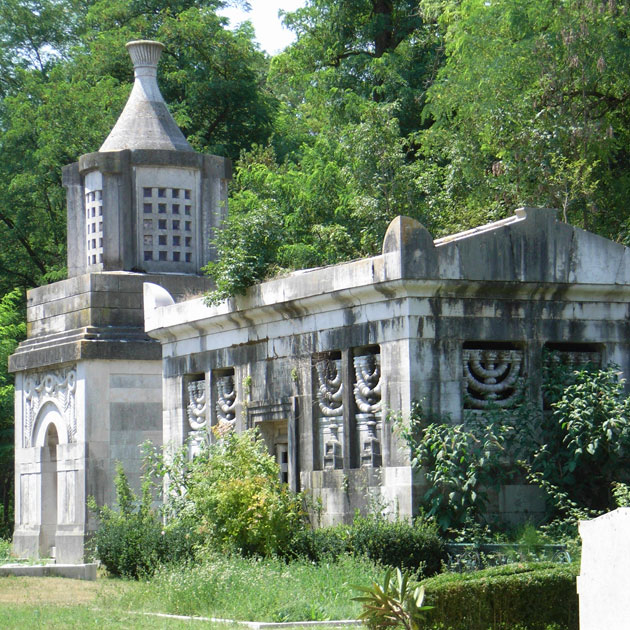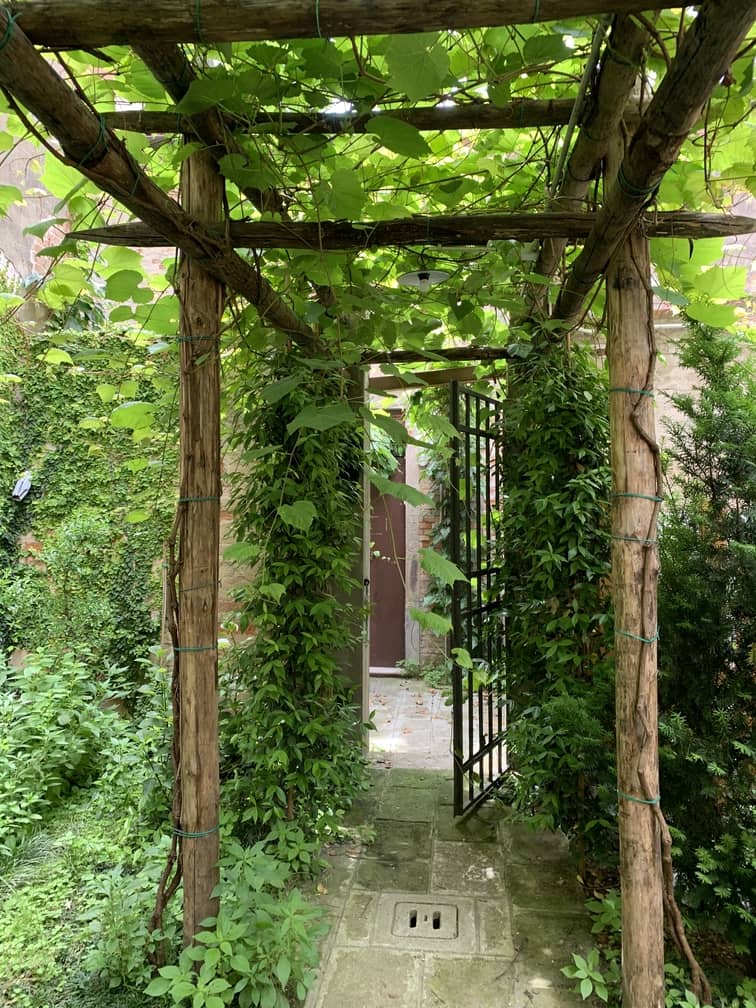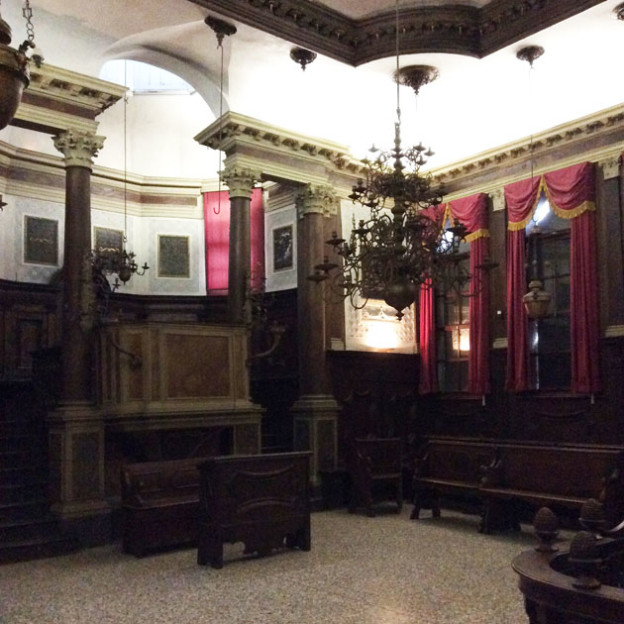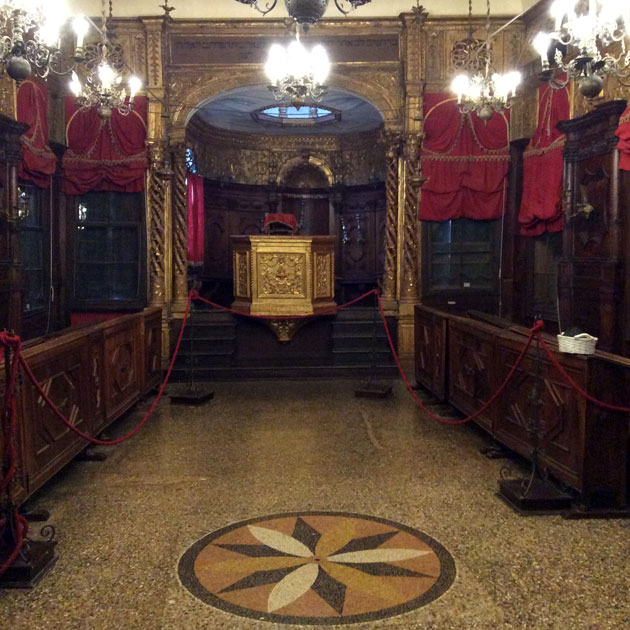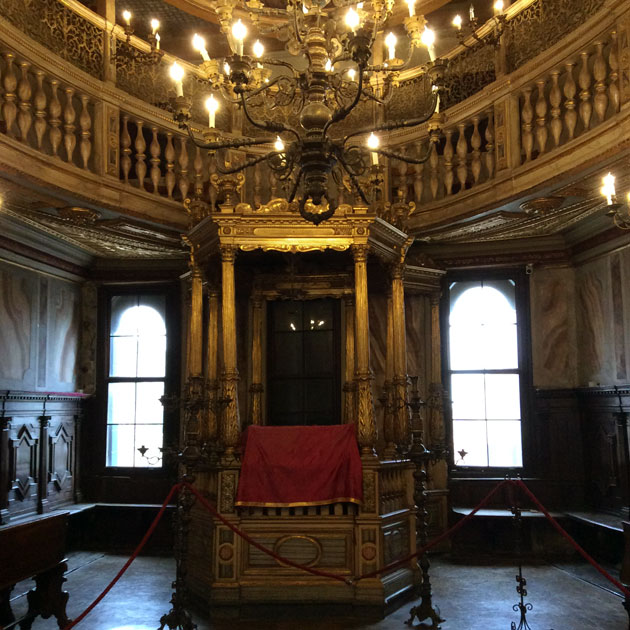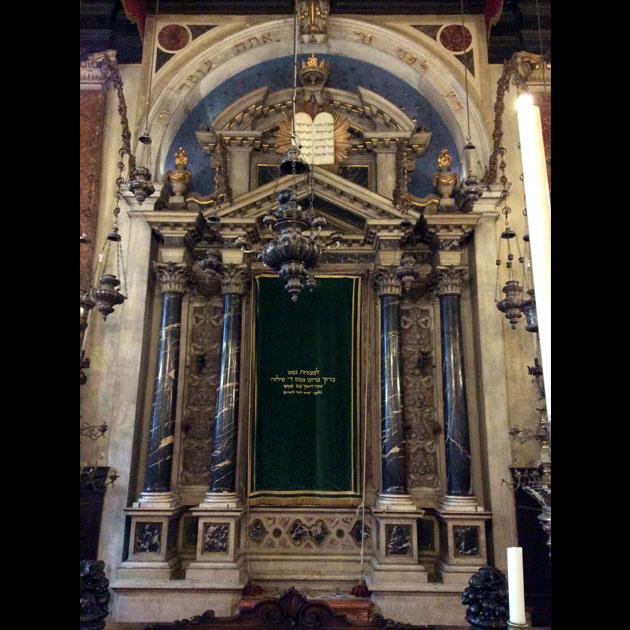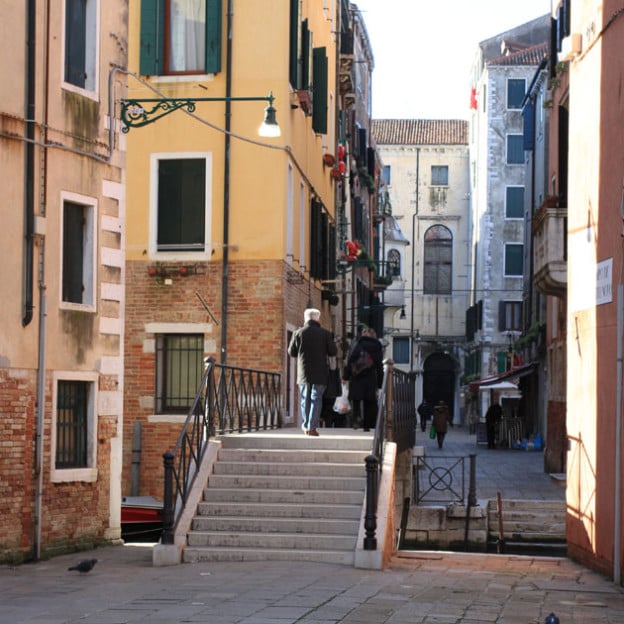Although there are no references nor documents before the 13th century CE, Ferrara’s Jewish presence is said to date back to the distant past. The community blossomed in the 15th and 16th centuries under the Dukes of Este who granted Jews a number of rights, although there were limitations in the law and records of episodes of intolerance in the town. Thanks to Este’s inclusive approach aimed at reviving their capital city, throughout their rule very important personalities of the Jewish world of the time passed through Ferrara. There were about two thousand Jews living in the city and ten prayer halls, often associated with private pawn shops. However, the situation changed when Duke Alfonso II died heirless in 1597 and Ferrara returned under the Church, given it was a papal feud. The Este Court retreated to Modena and many Jews followed them. In Ferrara Jews were progressively excluded from rights, and in 1624 the Ghetto was established in the heart of the medieval city, where the community had been living for years. It included Via dei Sabbioni (now Via Mazzini), enclosed by gates where it meets Piazza delle Erbe (today’s Trento Trieste) and, on the opposite side, Via Terranuova. Via Gattamarcia (now Via della Vittoria) was also enclosed at the crossroads with Via Ragno; via Vignatagliata likewise where it crosses Via de’ Contrari, and Via San Romano. The densely built-up area included Jewish homes and shops. There were three synagogues – two Italian and one Ashkenazi – all in the same building in Via Mazzini, which is where the community’s offices and facilities still are. A fourth synagogue was in Via Vittoria. The Oratory of Saint Crispin’s, where the forced conversionary sermons were held, was on the square, close to the corner with Via Mazzini, having been transferred from the chapel in the Palazzo Ducale (Duke’s Palace), so that the Jews could be spared the humiliating insults hurled at them by the populace during their walk from the ghetto. Despite their forced isolation, the community’s cultural and social life thrived and welfare & education confraternities and a Rabbinical School were established.
Many of the civil limitations were lifted with the arrival of the French (1796), which meant Jews were able to participate in public life. The ghetto was sealed off once again from 1825 to 1848, when the gates were finally removed. However, in 1849 Jews were disenfranchised yet again. Full equality was only achieved with the city’s annexation to the Savoy Kingdom, in 1859.
Although some buildings have since been renovated, the area which once was the ghetto is still fully identifiable.
Archives: Directory listings
Directory listings
Venician Ghetto and Synagogue Tour
Regular guided tours in English and in Italian to the Levantine Synagogue and the Luzzatto midrash are available on Thursdays (from 11:30 am until 5:30 pm) and on Mondays, Tuesdays, Wednesdays, Fridays and Sundays (from 10:30 am until 4:30 pm). It is possible to book private guided tours to 2 synagogues and the Luzzatto midrash.
Levantine Synagogue (Scola Levantina)
Levantine Jews built this synagogue between 1538 and 1561. It was then rebuilt in the course of the 17th century, and some elements of the façade suggest that it was designed in the workshop of Longhena.
The entrance in use is on Calle del Ghetto Vecchio; from the entrance hall, a staircase leads to the synagogue on the first floor. Above the doorway note the liagò, or loggia, which houses the bimah.
The sanctuary retains the traditional bi-focal layout with the aron and bimah on opposite walls. The sumptuous interiors are embellished by woodwork, plasterwork and red damask textiles. The most striking element is the bimah, an imposing carved walnut structure painted black, possibly designed by Andrea Brustolon of Belluno (1660-1732). Two lateral semi-circular staircases lead to the officiant’s raised level; the balustrade of the podium is flanked by twisting columns decorated with plant motifs, supporting the high canopy.
Equally impressive is the aron, on the opposite wall. Similar to that in the Scola Spagnola, it is framed by an archway with a sky blue, starry background. An architectural structure with columns and double tympanum encloses the doors of the ark. The steps leading up to it are enclosed by a balustrade in multi-coloured marble, and a brass gate made in 1786.
The Scola Levantina is still used regularly, alternating with the Scola Spagnola.
Venice Ancient Cemetery
Along the San Nicolò shore at the Lido is the old Venetian cemetery, founded in 1386. It has been overhauled several times over the centuries, mainly due to expropriation, during which many tombstones were lost. A new area adjacent to the first was opened in 1763, with the entrance on Via Cipro. It is currently still in use. The old cemetery was restored and rearranged in 1999: its 1200 tombstones were catalogued. They date from a period spanning the first half of the 16th century to the second half of the 18th century and denote the many different origins, cultures and languages of the Venetian Jews. A further 140 tombstones from the old cemetery are now at the new one: some are placed near the entrance, others in a nearby gallery room.
The Secret Garden of the Spanish Synagogue
The project known as the Secret Garden is on about 110 sqm at the back of the Spanish Synagogue.
The garden both reclaims an unkempt area and offers the Community an area suited to teaching and religious ceremonies. The wealth of plants recalls the ones mentioned in the Texts that can thrive in the local climate. Species include olive, fig, jujube, palm and pomegranate trees as well as apricots, almonds, strawberry trees, tamarisks and cedars of Lebanon with thick foliage.
Amidst the plants, a teaching area for school, a sukkah – the hut for Sukkoth High Holiday – and a fountain recalling the River Jordan and its tributaries.
Tours organised by the Jewish Museum of Venice
Italian Synagogue (Scola Italiana)
Built in 1566 by Jews from central Italy and later modified in 1575. It originally occupied modest rooms on the first floor, before being moved to its current location on the third floor of the same building, with a single entrance to several houses. This synagogue is also only visible from the outside thanks to its five large windows overlooking the square, bearing witness to the importance given to natural lighting as well as artificial.
The hall has a virtually square layout with a bifocal arrangement (aron and bimah on opposite sides; pews facing the central space). The fittings and interior decoration seem much more austere than the other scole in the Ghetto Novo, which are rich in gilded ornamentation. The lower section of the walls is covered in cherry woodwork with a fixed bench, while the upper section bears pale floral plasterwork and gilded inscriptions on black stone (1810). The same wall decoration continues uninterrupted throughout the apse which houses the bimah. Separated by four wooden columns, it is placed on a raised level at lit by a domed lantern.
The nineteenth-century aron, in dark wood, is framed by Corinthian pillars and trabeation. In 1842, a balustrade was placed in front of it, featuring small columns and intersecting wooden arches.
Canton Synagogue (Scola Canton)
Built in 1531-1532 and renovated in later centuries. The name derives from its position on a corner (in Venetian, canton) of the square.
The main façade with its characteristic five windows is on Rio Ghetto Novo; wedged between walls and roofs, one can make out from below the wooden structure of the bimah, with a domed lantern above it.
Like the Scola Grande Tedesca, it had originally a central plan and was later rearranged in the traditional bifocal layout, with the bimah and aron placed on the shorter sides, and pews lined up along the longer sides.
The entrance way is preceded by a narrow hallway with windows onto the main hall; this was most likely used by women, before the matroneum was built on the upper level (1736), and later by those who did not have a place in the hall.
Inside, wood panelling with seats runs along the walls, which are decorated in the upper section with paintings depicting passages from Biblical stories. The gilded wooden gratings of the matroneum overlook the hall above the entrance. The aron (1672), in carved, gilded wood, presents a tripartite structure with a central tabernacle and benches on either side. A striking stained glass window stands out at the centre of the split tympanum.
At the opposite end is the bimah (1780), richly decorated with plasterwork and framed by a lowered arch, supported by twisting pillars in the shape of intertwined branches.
Great German Synagogue (Scola Grande Tedesca)
The Scola Grande Tedesca was founded by the Ashkenazi group in 1528; it was renovated in 1732-1733 and then again in the 19th century. From the square the five large windows are the only recognisable element of the synagogue in the context of the surrounding houses. On the side of the San Girolamo canal, meanwhile, the visible element is the liagò which holds the aron. Originally built with a central plan layout, in 1860 it acquired – almost certainly for static reasons rather than religious – the “bifocal layout” typical of the Venetian scole (and also found in many other Italian synagogues), whereby whereby the bimah and aron are placed on opposite walls, with the pews facing a central corridor.
The lavish aron (1672), flanked by two benches, presents a tripartite structure, gilded and embellished with architectural elements. Its doors are decorated on the outside with floral motifs and on the inside with the Ten Commandments in mother-of-pearl inlay.
On the opposite side, the bimah has a canopy structure with a trabeation held up by eight columns and decorated with the same ornamental motifs as the aron.
The lower section of the walls is clad in cherry wood panelling, forming a continuous bench. The upper section has marmorino stucco panels. Above it, running along the entire perimeter of the room is a red frieze with the text of the Ten Commandments inscribed in gold.
The oval shape of the sumptuous matroneum gives harmony to the irregular layout of the hall.
Spanish Synagogue (Scola Spagnola)
This is the largest of Venice’s synagogues, and is still used regularly, alternating with that of the Scola Levantina. It was founded in around the mid-16th century by Jewish exiles from the Iberian peninsula.
The seventeenth-century design is the result of the work of a commission which included a Jewish “architectural expert”, a certain Juda Camis, who was presumably associated with the workshops of the Venetian architects of the period, such as Antonio Gaspari, Giuseppe Sardi and Baldassarre Longhena. Externally, it bears an austere façade with four large arched windows on the first floor, and a row of square windows beneath the cornice, corresponding to the level of the women’s gallery.
A staircase built in 1894 leads from the ground floor atrium to the main sanctuary. The interior is very bright thanks to the large windows. Facing each other on the shorter sides are the aron and the bimah, while the pews are arranged along the longer sides. The aron, similar to that of the Scola Levantina, has dark marble columns and a double tympanum, and is framed by an arch with a sky blue background with golden stars. Works carried out in the late 19th century included the addition of the semi-circular balustrade in front of it; at the same time, an organ was installed in the canopied structure of the bimah and the officiant’s position was moved to the near the aron. In 1980, the original layout was restored.
On the ground floor of the building, a small room contains the antique furniture of the Scola Kohanim, one of the private synagogues which used to exist in Venice, which was originally in the Ghetto Novo area.
Old Ghetto (Ghetto Vecchio)
The area of the old foundry (hence the name Ghetto Vecchio) was granted to the Levantine Jews in 1541. It is linked to the Ghetto Novo by the Agnudi bridge, and closed off on the side of the river Cannaregio by a gate.
The main street (Strada Maestra, now called Calle del Ghetto Vecchio) was for the most part made up of community facilities such as shops and places of study. Among these was the Leon da Modena midrash at number 1222, named after the leading cultural exponent of the Venice ghetto, who lived from 1571 to 1648.
Approximately halfway along the street, on the “campiello delle scuole”, stand the two Sephardic synagogues: the Scola Spagnola and the Scola Levantina. Unlike the synagogues in the Ghetto Novo, these places of worship present fine elements on their exteriors, such as the seventeenth-century facade of the Levantina, which recalls the work of Baldassarre Longhena.
